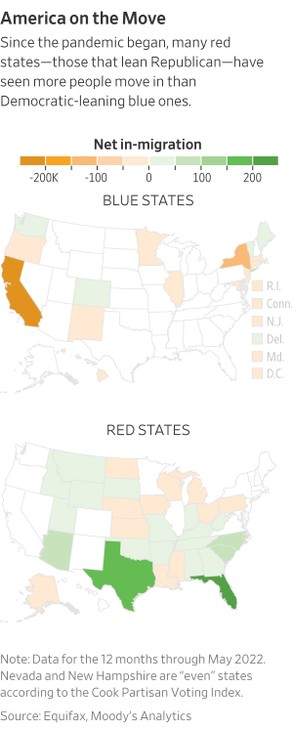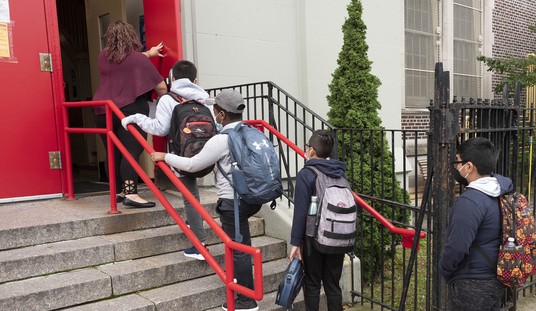When Georgia and Florida reopened after the initial COVID-19 lockdowns, many self-styled experts scoffed at these states’ efforts to get their economies back up and running. But as they were the first two states to reopen, all eyes were on them to see what would happen.
Both states’ economies came back to life, and other red states followed. So it’s no surprise that red states are the ones on the leading edge of a post-pandemic economic recovery.
“By many measures, red states—those that lean Republican—have recovered faster economically than Democratic-leaning blue ones, with workers and employers moving from the coasts to the middle of the country and Florida,” reports Josh Mitchell at the Wall Street Journal.
Red states have added nearly 350,000 jobs since February 2020, while blue states are still down 1.3 million jobs since the beginning of the pandemic. That’s a massive difference, and it’s just the tip of the iceberg. Migration is a big reason for the recovery in red states.
“Forty-six million people moved to a different ZIP Code in the year through February 2022, the most in any 12-month period in records going back to 2010, according to a Moody’s analysis of Equifax Inc. consumer-credit reports,” Mitchell writes. “The states that gained the most, led by Florida, Texas and North Carolina, are almost all red, as defined by the Cook Political Report based on how states voted in the past two presidential elections. The states that lost the most residents are almost all blue, led by California, New York and Illinois.”

Several factors play into what has made red states more attractive places to live. Lower or no state taxes are a plus, and many large and small companies have relocated to red states because of the business-friendly atmosphere in those areas. Additionally, the advent of work-from-home culture has allowed some people to relocate while staying employed with a blue-state company.
Related: Solid Majority of Americans Believe the U.S. is in a Recession
The mass migration to red states coincides with a move away from urban cores to suburbs and rural areas with lower costs of living, and conservative states often offer both a more affordable standard of living and more house for the money than bluer areas.
Mitchell points out that “large urban areas with high shares of commuters lost residents in the 12 months through July 2021. Among that group, large urban counties with the highest median home values experienced the biggest declines.”
“Small and medium-size cities, suburbs and rural areas—all of which tended to have less expensive housing than large urban areas—all gained residents,” he continues.
One of the biggest factors in the move to red states is the pandemic itself. Mitchell references a study showing that families have preferred to move to locales with more relaxed COVID protocols — often with little to no restrictions at all.
“We find more than 12% of moves between April 2020–December 2021 were influenced by COVID-19, with a significant shift in migration towards smaller cities, lower cost of living locations, lower tax locales, and locations with fewer pandemic-related restrictions,” the abstract of the study reads.
If you live in a red state or a conservative area of a blue state, this information shouldn’t surprise you. But the national media is catching on, which tells you how significant the advantage of living in red states has become.










Join the conversation as a VIP Member